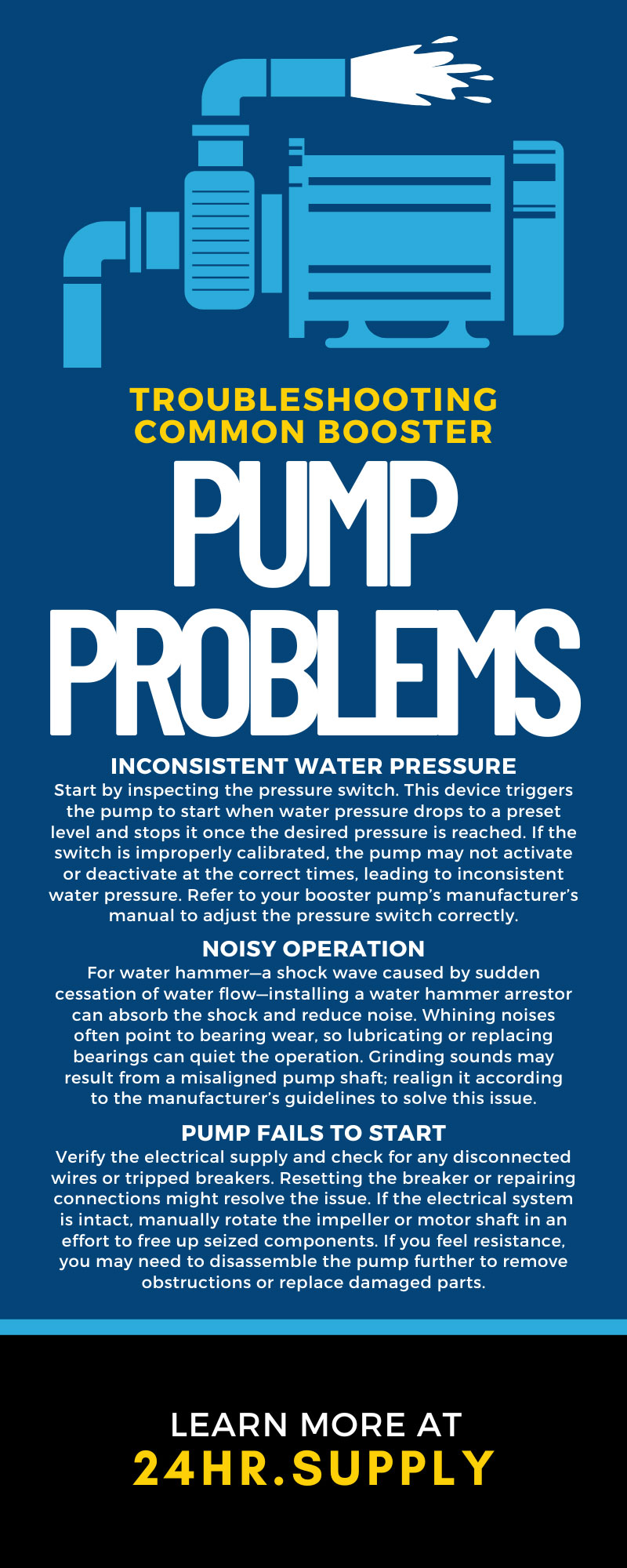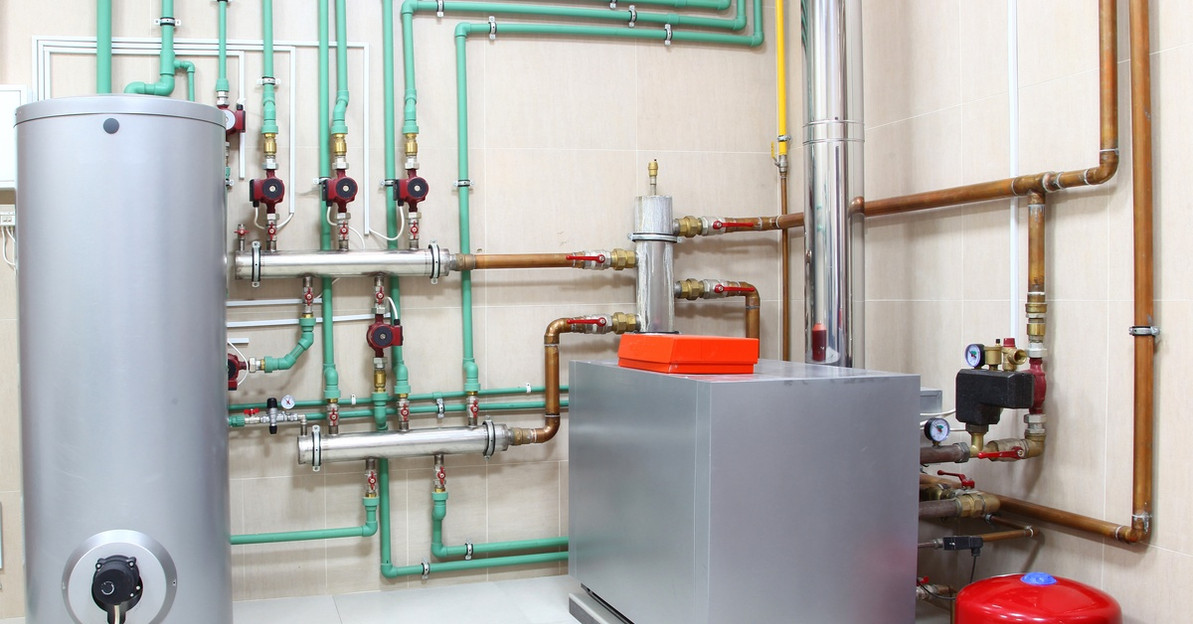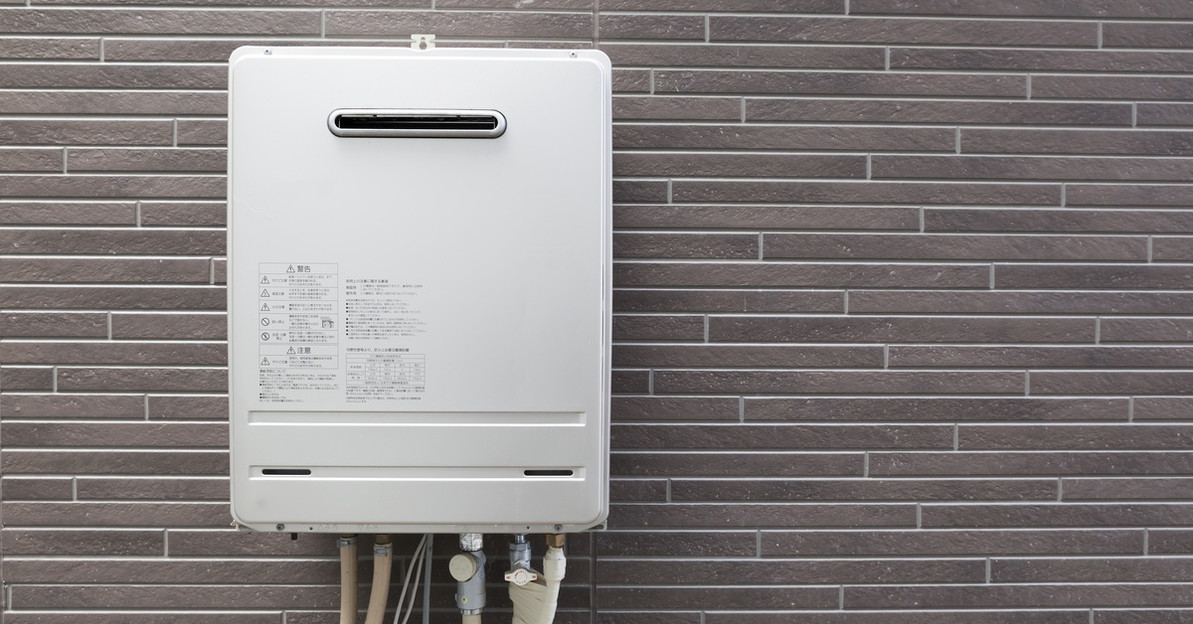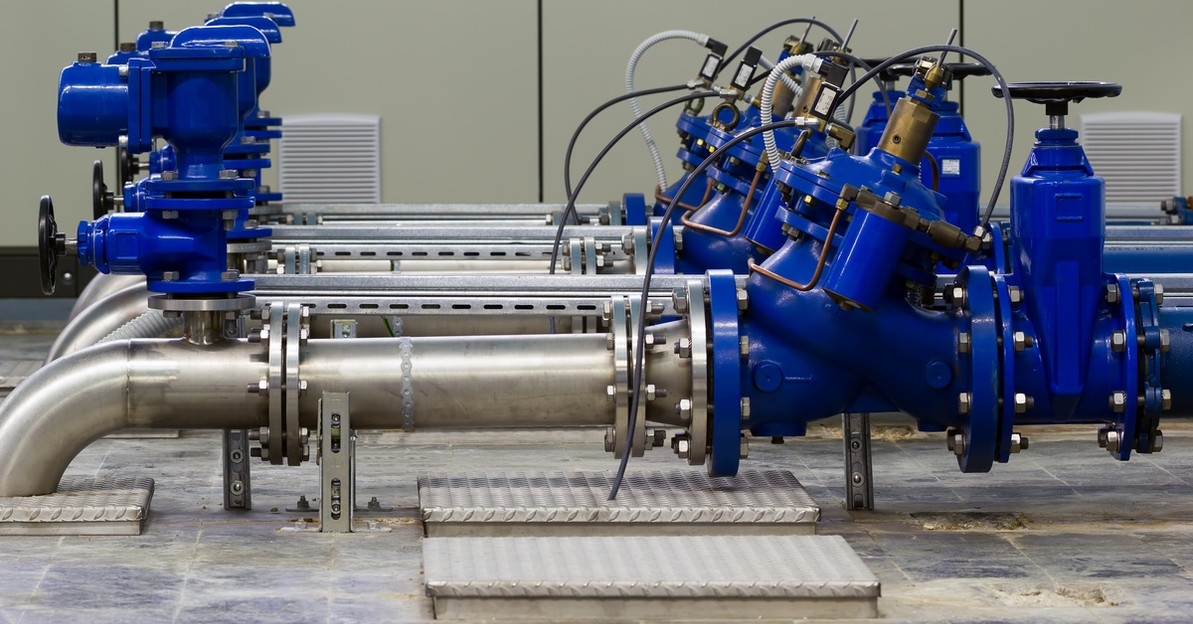Troubleshooting 8 Common Booster Pump Problems
Booster pumps, those vital cogs in the machinery of our water supply systems, often operate unnoticed until a hiccup in their performance disrupts our daily routines. Fluctuating pressures, mysterious noises, and unwelcome leaks can quickly escalate from minor nuisances to major headaches. But addressing these common complications need not be a daunting task. With the right approach, pinpointing and rectifying issues within these crucial devices can be straightforward.
This detailed exploration serves as your go-to manual for navigating booster pump malfunctions. Designed to cater to a broad audience, from the hands-on facility manager to the proactive homeowner, this guide will arm you with the insights needed to tackle these challenges head-on.
Prepare to dive deep into the mechanics of troubleshooting common booster pump problems. Let’s demystify the process to keep your water system functioning properly, ready to meet the demands of everyday use.
Inconsistent Water Pressure
Problem:
Fluctuating water pressure is a common challenge, manifesting as unpredictable variations in water flow. This inconsistency can be due to several factors, such as an incorrectly calibrated pressure switch or blockages within the system.
Solution:
Start by inspecting the pressure switch. This device triggers the pump to start when water pressure drops to a preset level and stops it once the desired pressure is reached. If the switch is improperly calibrated, the pump may not activate or deactivate at the correct times, leading to inconsistent water pressure. Refer to your booster pump’s manufacturer’s manual to adjust the pressure switch correctly.
Next, examine any filters or strainers in the system. Debris accumulation can restrict water flow, which can cause pressure fluctuations. Clean or replace these components as needed to ensure unimpeded water movement.
Noisy Operation
Problem:
A booster pump should operate smoothly with minimal noise. Loud noises, such as banging (water hammer), whining (bearing issues), or grinding (pump misalignment), indicate underlying problems.
Solution:
For water hammer—a shock wave caused by sudden cessation of water flow—installing a water hammer arrestor can absorb the shock and reduce noise. Whining noises often point to bearing wear, so lubricating or replacing bearings can quiet the operation. Grinding sounds may result from a misaligned pump shaft; realign it according to the manufacturer’s guidelines to solve this issue.
Pump Fails To Start
Problem:
Electrical or mechanical failures can prevent a booster pump from starting. These failures may include power supply issues, tripped circuit breakers, or seized pump components.
Solution:
Verify the electrical supply and check for any disconnected wires or tripped breakers. Resetting the breaker or repairing connections might resolve the issue. If the electrical system is intact, manually rotate the impeller or motor shaft in an effort to free up seized components. If you feel resistance, you may need to disassemble the pump further to remove obstructions or replace damaged parts.
Low Flow or Reduced Discharge Pressure
Problem:
A noticeable decrease in water flow or discharge pressure can indicate several issues, from blockages or damage within the pump itself to problems in the suction line. Common causes include clogged filters, closed or partially closed valves, suction line leaks, or worn impellers.
Solution:
Begin by checking for any blockages in the system. Clean or replace clogged filters and ensure all valves in the system are fully open. Next, inspect the suction line for leaks; even small leaks can significantly reduce the pump’s ability to draw water, leading to reduced flow or pressure.
If the suction line is intact, examine the pump’s impeller. Wear and tear on the impeller can diminish its effectiveness and necessitate replacement. For systems with adjustable speed drives, verify that the settings are correct for your needs, as incorrect speed settings can similarly affect flow and pressure.
Leakage Around the Pump
Problem:
Leaks can originate from the pump casing, seals, or connections. These issues can lead to water wastage and potential damage to surrounding areas.
Solution:
Identify the leak source. If it’s from the pump casing or seals, turn off the pump and relieve pressure before attempting repairs. Replacing worn seals or gaskets can often remedy leaks. For leaks at pipe connections, tightening the fittings may suffice. If not, apply new plumber’s tape or replace old gaskets to ensure a watertight seal.
Overheating
Problem:
Overheating can cause a pump to shut down to prevent damage. Poor ventilation, overloading, or a faulty thermal protector are common culprits.
Solution:
Make sure the pump is in a well-ventilated area that is clear of debris that could restrict airflow. Check the pump’s workload to confirm it’s within the recommended limits to prevent overload. If the thermal protector is malfunctioning, replace that component to prevent overheating and safeguard the pump.
Reduced Pump Performance Over Time
Problem:
A decline in pump performance or water output over time can indicate wear or the need for maintenance. This gradual decrease in efficiency can affect the entire water supply system.
Solution:
Regular maintenance is key. Inspect and clean the impeller, diffuser, and other internal components to remove buildup that can impede performance. Also, check for signs of wear on seals, bearings, and other parts, replacing them as necessary. If that wear and tear continues to impact your pump’s performance, consider investing in a new Grundfos residential booster pump to replace your current one.
Over-Cycling Due to Air Entrapment
Problem:
If your booster pump switches on and off more frequently than normal—a condition known as over-cycling—it might be due to air trapped within the system. When air is trapped in the pump or piping, the pressure switch misreads the system’s pressure levels. This leads to the pump cycling on and off rapidly, which can significantly reduce its lifespan and efficiency.
Solution:
Start by bleeding the air from the system. Most booster pumps and systems have air release valves designed for this purpose, so open these valves to let the trapped air escape. If your system lacks automatic air vents, you may need to manually release air from the highest points in the piping.
Once the air is expelled, monitor the pump’s cycling behavior. If over-cycling persists, check the pressure tank’s bladder or diaphragm for integrity, as a damaged bladder can also mimic symptoms of air entrapment by failing to maintain proper pressure.
Now What?
Each twist and turn in troubleshooting common booster pump issues underscores the importance of understanding the mechanics behind these complex devices. This knowledge also highlights the empowerment that comes with acquiring practical problem-solving skills.
Embarking on the path of troubleshooting doesn’t just end with fixing a current problem. Nurture a mindset geared toward anticipation and prevention! Listen closely to the silent language of your machines to save significant time, resources, and stress down the line.
As you move forward, remember that the essence of troubleshooting lies in seeing each challenge not as a barrier but as an opportunity to learn, adapt, and grow. Whether you’re a seasoned professional or a curious newcomer to the world of booster pumps, the lessons you learn here will serve as invaluable tools in your plumbing arsenal.

Recent Posts
-
A Guide to Implementing Indirect Water Heating With Boilers
Choosing the right water heating method for your home or business significantly impacts energy effic …Dec 9th 2025 -
How Tankless Water Heaters Can Benefit Commercial Kitchens
A commercial kitchen operates at a fast pace and maintains very high performance standards. Every pi …Dec 3rd 2025 -
Noise Reduction Strategies for Urban Booster Pump Installs
In densely populated urban areas, every sound matters. The constant hum of traffic, construction, an …Dec 2nd 2025





